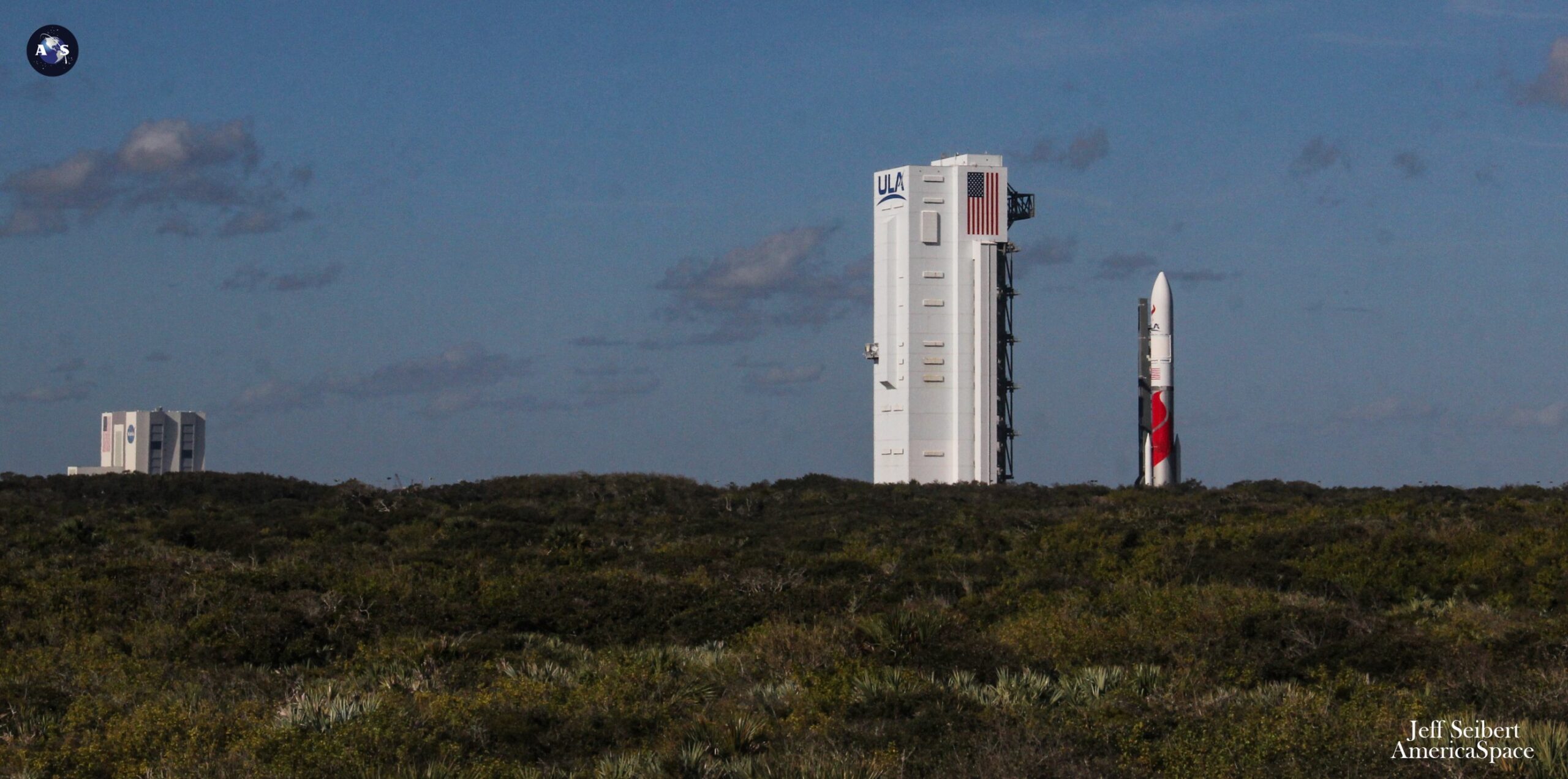
If 2024’s opening few days are anything to go by, SpaceX looks firmly committed to its goal of up to 144 Falcon-class missions, after smoothly wrapping up its third flight inside the year’s first week. Having already completed a record-breaking 96 flights in 2023—91 missions using 15 “single-stick” Falcon 9 boosters and five launches by the triple-barreled Falcon Heavy—the Hawthorne, Calif.-headquartered organization has gone on record with its aim to fly up to a dozen times per month before the next New Year’s Eve.
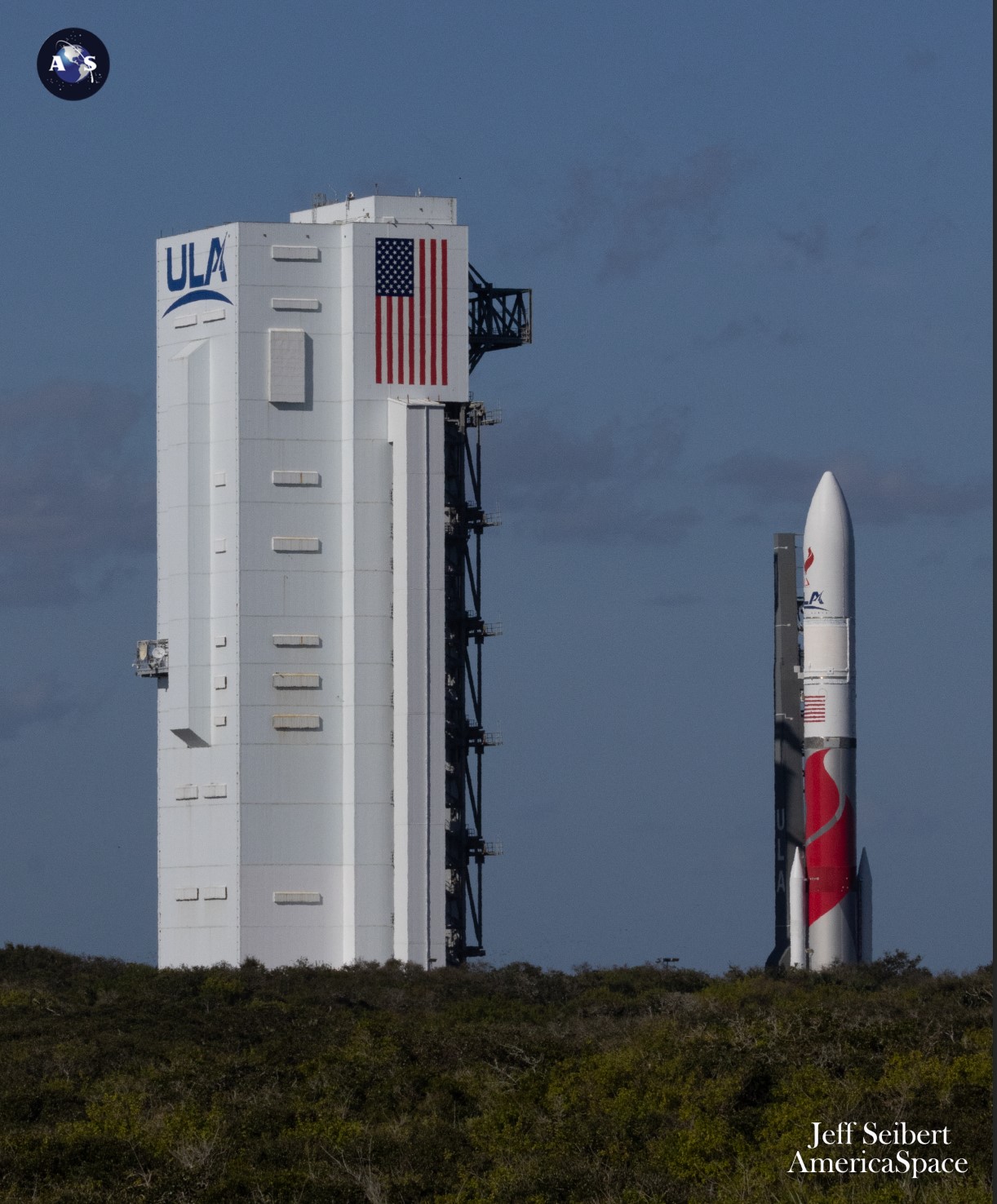
Such a high flight-rate requires a launching mission each 2.5 days, a substantial uptick on 2023’s impressive cadence which saw a Falcon leave the pad on average every 3.8 days. But with three missions already accomplished in the year’s first week—a pair of Starlink internet communications satellite launches and the successful lofting of Sweden’s Ovzon-3 broadband communications satellite to Geostationary Transfer Orbit (GTO) last Wednesday—the pace has already quickened into a roar.
And that roar will sound twice over the Space Coast this week, with the dust and smoke having barely cleared from tonight’s Falcon 9 launch before United Launch Alliance (ULA) aims for 2:18 a.m. EST Monday for the maiden “Cert-1” certification flight of its Vulcan-Centaur heavylifter out of Space Launch Complex (SLC)-41 at Cape Canaveral Space Force Station, Fla. The 202-foot-tall (61-meter) booster rolled out of the Vertical Integration Facility (VIF) and completed a quarter-mile (400-meter) roll to the pad on Friday, following a satisfactory Launch Readiness Review (LRR).
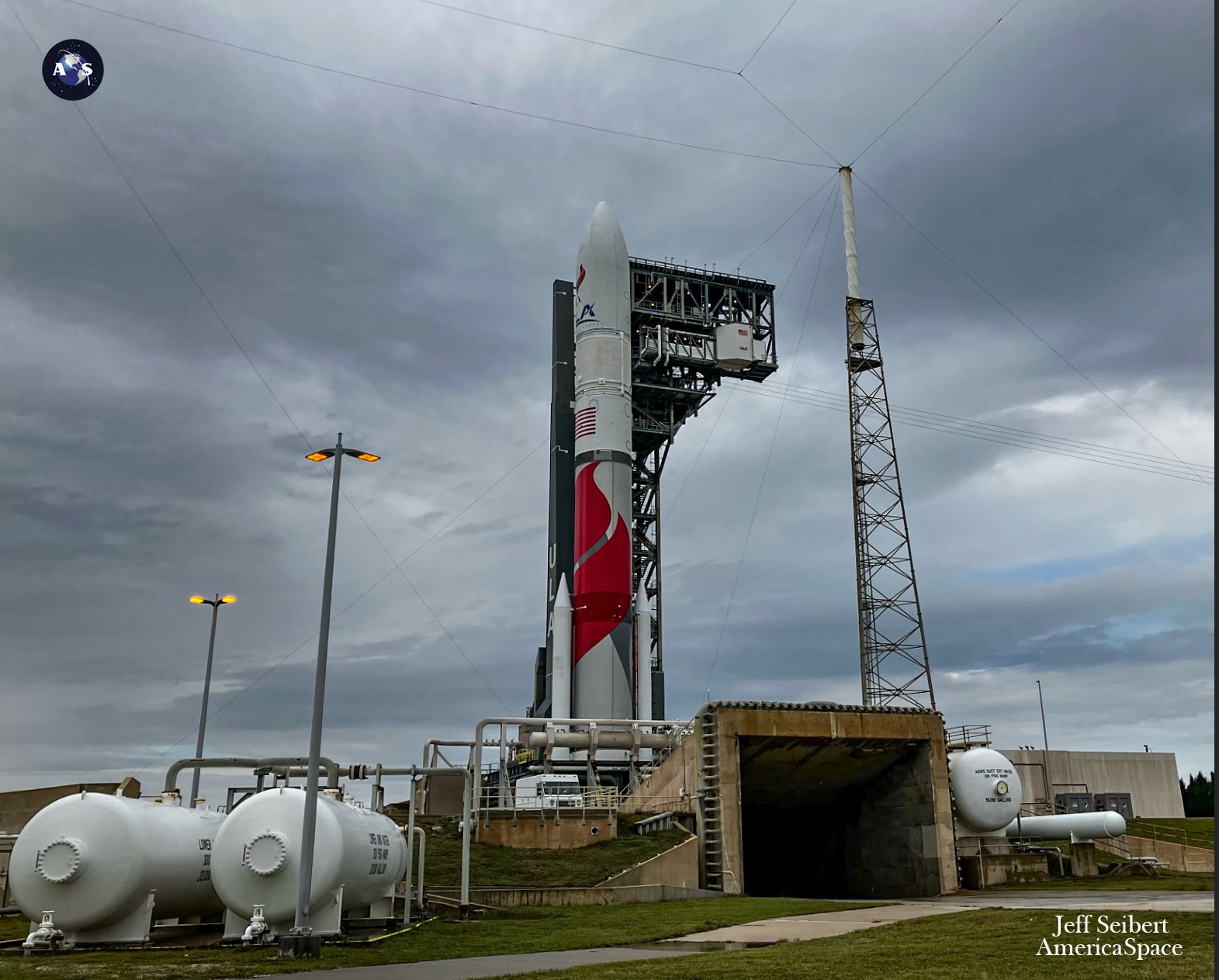
Cert-1 has three back-to-back launch attempts on the Eastern Range, with Monday morning’s opening opportunity offering the best odds—some 85-percent favorability—with a sharp deterioration to 30-percent favorability on Tuesday and 45 percent on Wednesday. Elevated winds and an encroaching cold front are “likely” to bring a period of strong winds, heavy rain and thunderstorms in the early part of the new week.
“By the primary launch window, high pressure should bring generally favorable weather conditions, although there is a slight chance of a Thick Cloud Layers Rule violation from clouds associated with the subtropical jet,” the 45th cautioned in its Sunday update. “By Monday night, winds will begin to increase ahead of an approaching low-pressure system,” it added, with an expectation that there would be no cessation until late Tuesday night, with “multiple” Launch Commit Criteria (LCC) violations likely.
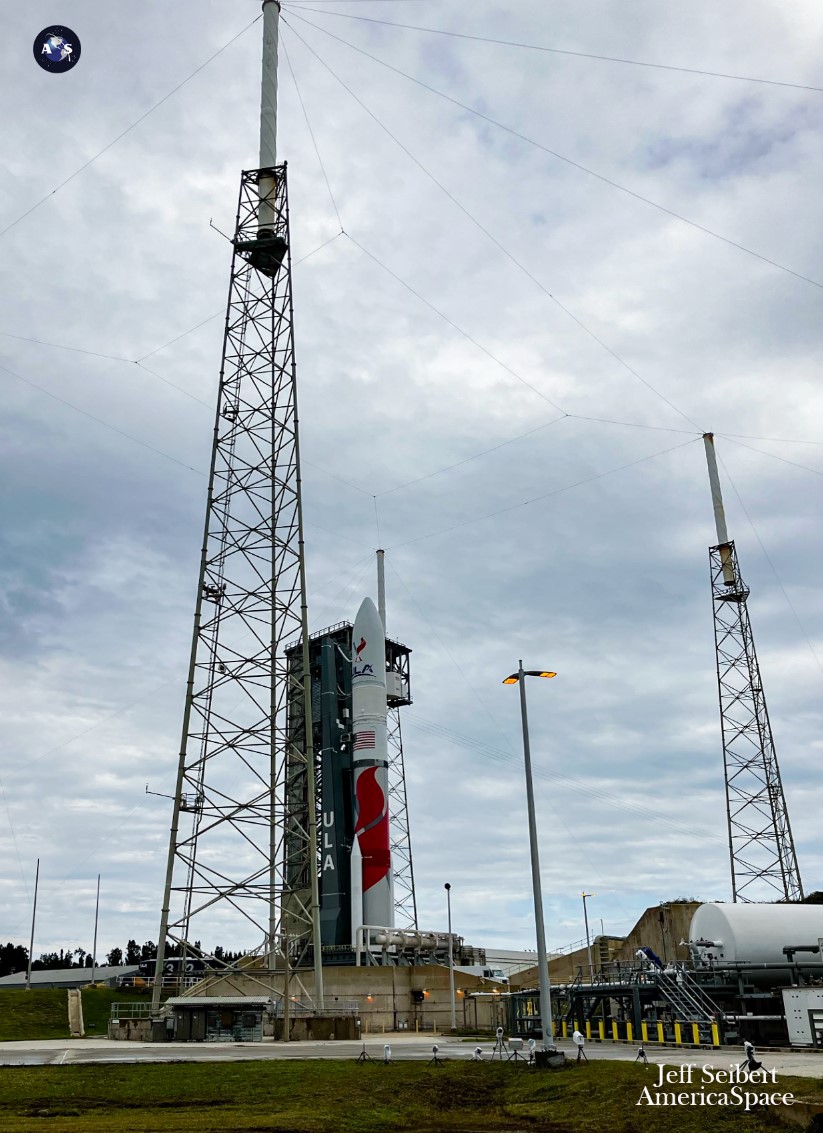
In development for the last decade, ULA intends the Vulcan-Centaur ultimately to replace its in-service Atlas V and soon-to-be-retired Delta IV fleets. For its maiden outing in a few hours’ time, it will rise from SLC-41 under almost 2.1 million pounds (950,000 kilograms) of thrust from the twin Blue Origin-built BE-4 engines at the base of its core stage and a pair of Northrop Grumman Corp.-furnished Graphite Epoxy Motor (GEM)-63XL solid-fueled strap-on boosters to deliver Astrobotic’s Peregrine lunar lander into a highly elliptical orbit of more than 220,000 miles (360,000 kilometers) to intercept the Moon next month and propel Celestis, Inc.’s Enterprise Flight memorial payload into deep space.
Tomorrow morning’s launch will begin at T-5 seconds, when the Vulcan core stage’s BE-4 engines ignite, building up thrust to over 1.1 million pounds (450,000 kilograms). At T-0, their roar will be joined by the staccato crackle of the GEM-63XL boosters to power the stack uphill, exceeding the speed of sound at 70 seconds into flight and experiencing “Max Q”—the peak amount of aerodynamic stress upon its airframe—at 76 seconds.
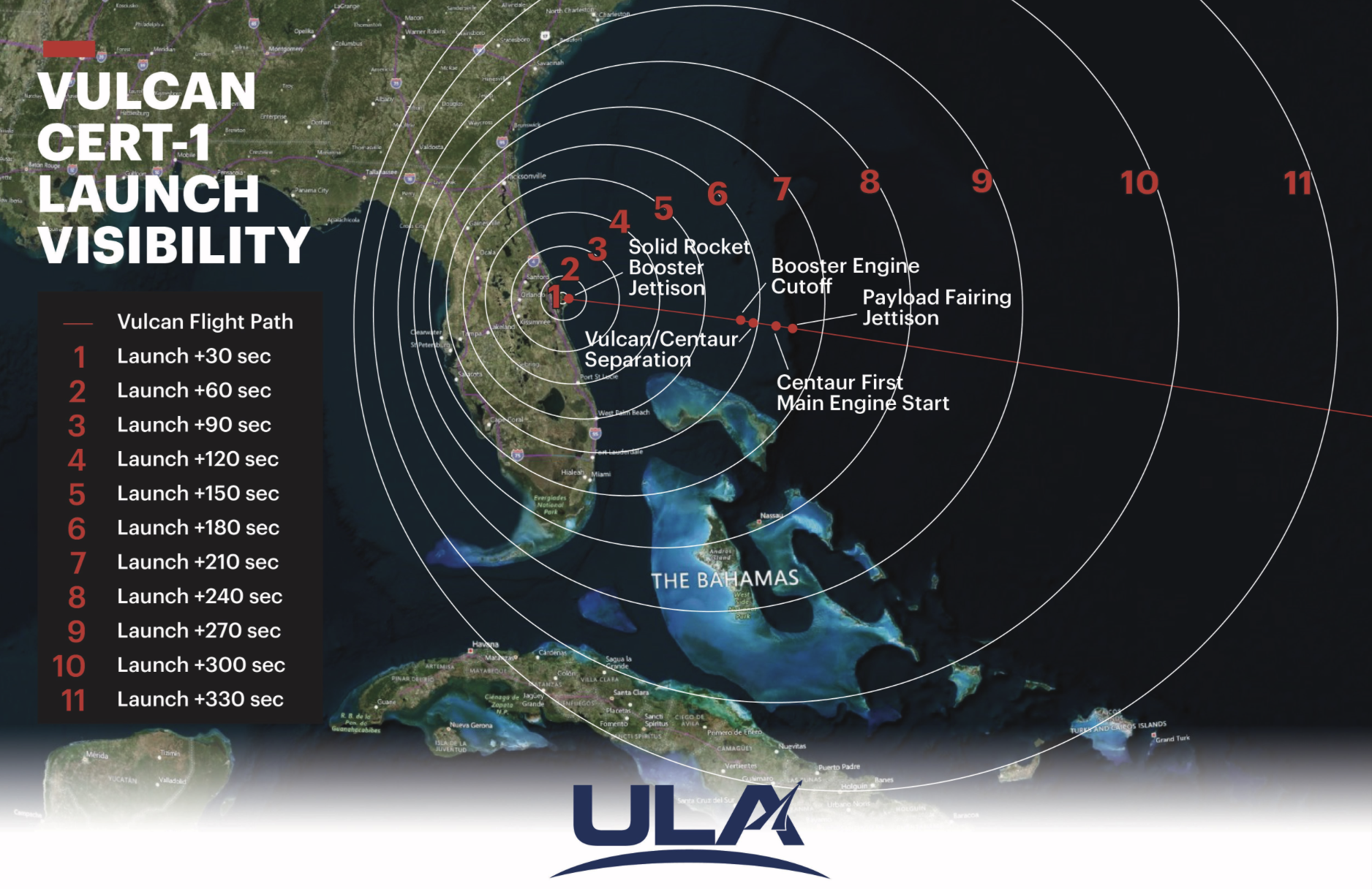
Their job done, the twin GEM-63XLs will be jettisoned at 110 seconds after liftoff, after which the BE-4s will continue their own “burn” to push the Vulcan-Centaur to the edge of space. Shutting down five minutes into the flight, the 109.2-foot-long (33.3-meter) core stage and the 38.5-foot-long (11.7-meter) Centaur V upper stage will part company.
It will next be the Centaur V’s responsibility to conduct the remainder of the mission, executing three burns of its twin Aerojet Rocketdyne-built RL-10 engines to emplace Peregrine into a highly elliptical orbit, more than 220,000 miles (360,000 kilometers) above Earth, and deliver the Enterprise Flight memorial payload into deep space. The Centaur V, which possesses 40 percent more endurance and 2.5 greater energy than ULA’s current in-service upper stages, will kick off the first burn of its RL-10 engines, lasting ten minutes and 31 seconds, shortly after separation from Vulcan’s core.
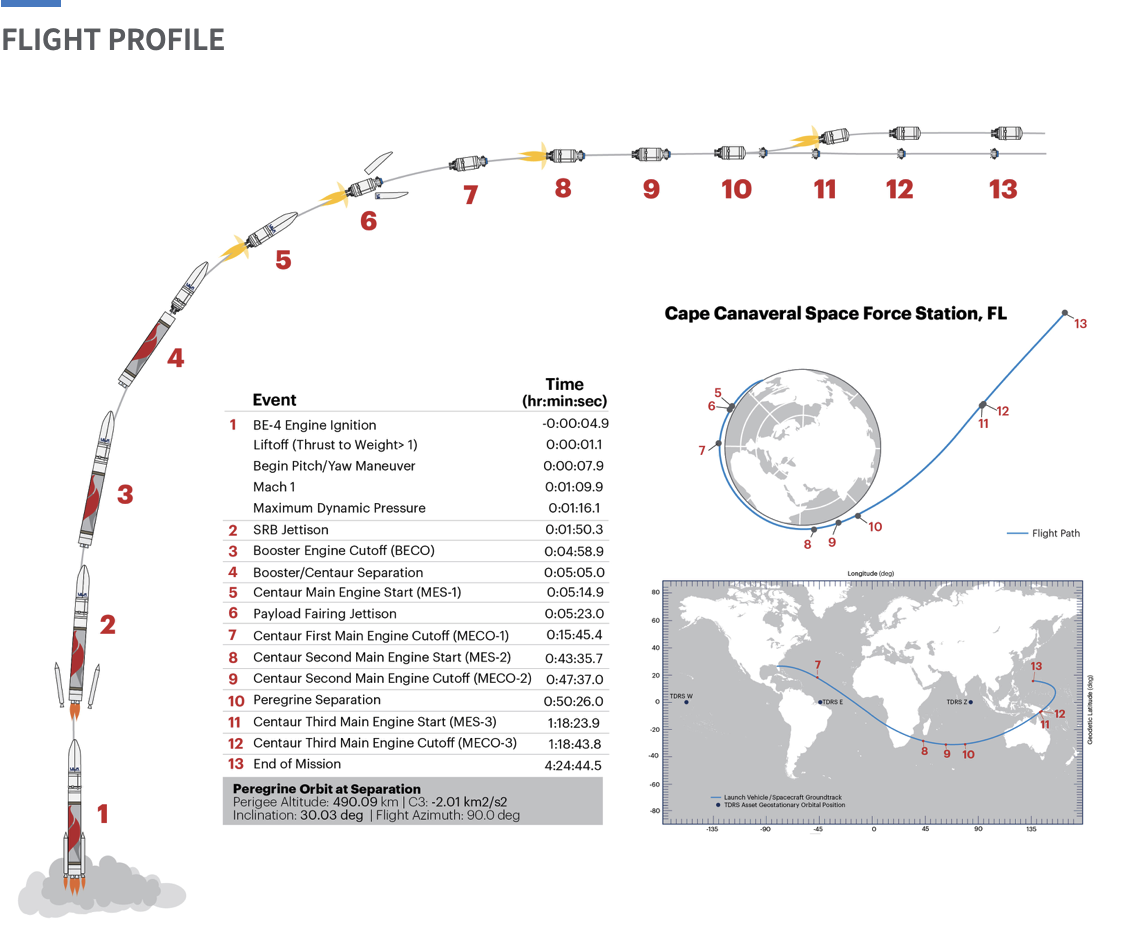
During the burn, the two-piece composite fairing will be discarded, exposing Peregrine to the harsh environment of space for the first time. After Main Engine Cutoff (MECO)-1, by which point the Centaur will be high above the mid-Atlantic Ocean, the stack will coast for 28 minutes, before the RL-10 engines ignite again, this time running for four minutes and two seconds to lift Peregrine into a TLI orbit.
MECO-2 will take place at T+47 minutes and 37 seconds, with Peregrine expected to be deployed three minutes later high above the Indian Ocean at an altitude of 304 miles (490 kilometers), inclined 30.03 degrees. The lander is targeting touchdown on the Moon in February 2024. A final burn of the RL-10 engines, lasting about 20 seconds, will end with MECO-3 at T+78 minutes, carrying Centaur V and Enterprise Flight into a long-lasting and stable solar orbit.
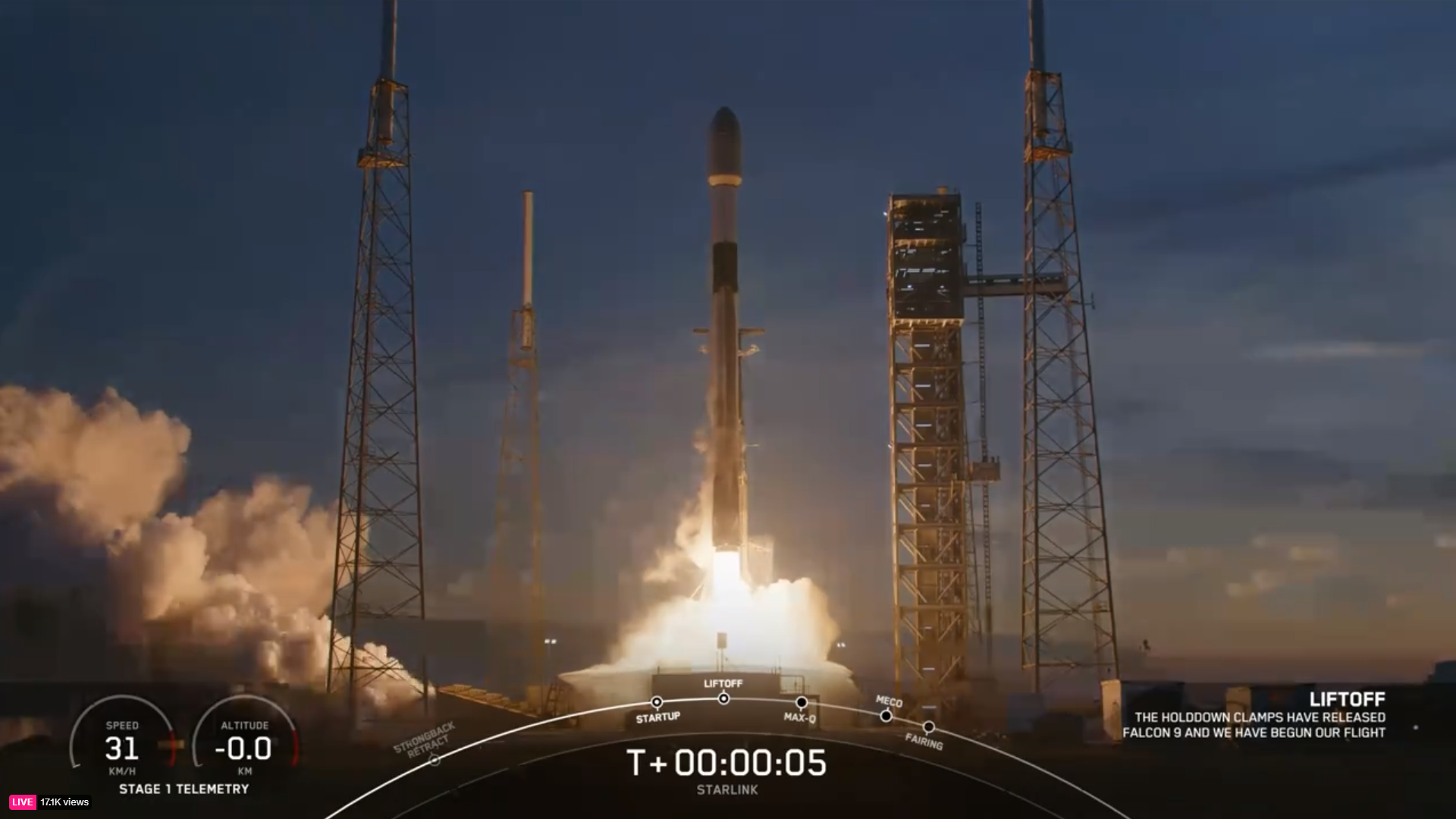
But before this dramatic maiden voyage could commence, SpaceX at 5:35 p.m. EST Sunday executed its third launch of the year. Veteran B1067 completed no fewer than 15 flights between June 2021 and last November; her 16th launch tonight sets her in fourth place on the list of most experienced operational Falcon 9 boosters behind her “in-service” siblings B1060, B1061 and B1062, all three of which have reached 17 flights.
B1067 first saw service almost three years ago to launch the CRS-22 Cargo Dragon for a month-long stay at the International Space Station (ISS). She went on to deliver eight astronauts from the United States, Germany and Italy to the sprawling orbital complex on Crew-3 in November 2021 and Crew-4 in April 2022, followed by the CRS-25 Cargo Dragon to the ISS the following summer.
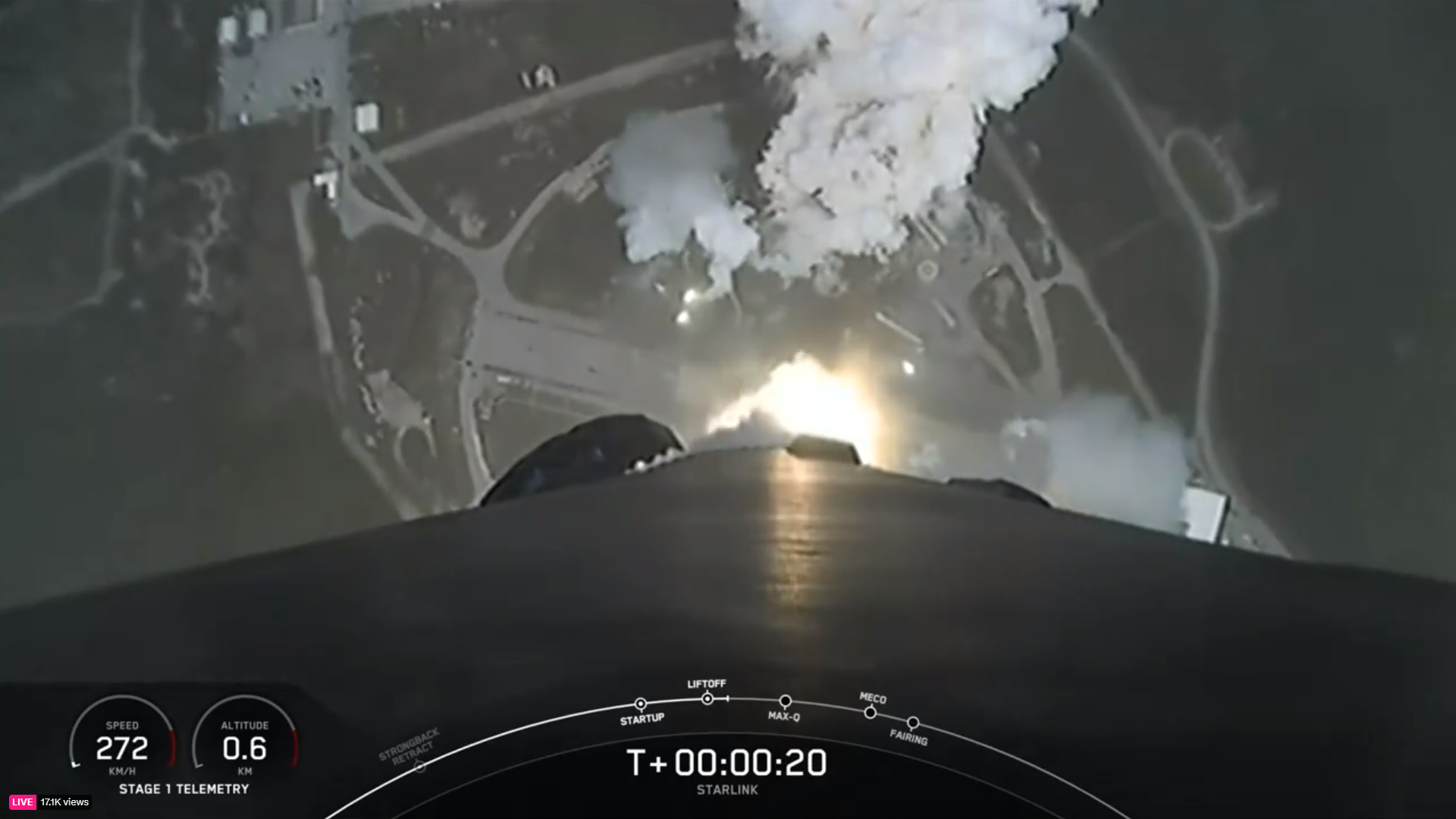
Added to this impressive list, B1067 also lifted a geostationary communications satellite for Turkey in December 2021—which helped set a new record (now broken) between pairs of Falcon 9 launches at less than 16 hours—and a pair of O3b mPOWER broadband satellites in December 2022. Other payloads included the Hotbird 13G communications satellite in November 2021 and last June the Satria Very High Throughput Satellite (VHTS), built by Thales Alenia Space for Indonesia’s Pasifik Satelit Nusantara (PSN).
Her Hotbird 13G launch in November 2021 marked the first time that SpaceX achieved 50 Falcon 9 missions in a single calendar year. And in January of 2023, one of her Starlink payloads tipped the scales at 38,400 pounds (17,400 kilograms) to become the heaviest Falcon 9 payload ever orbited at that time.
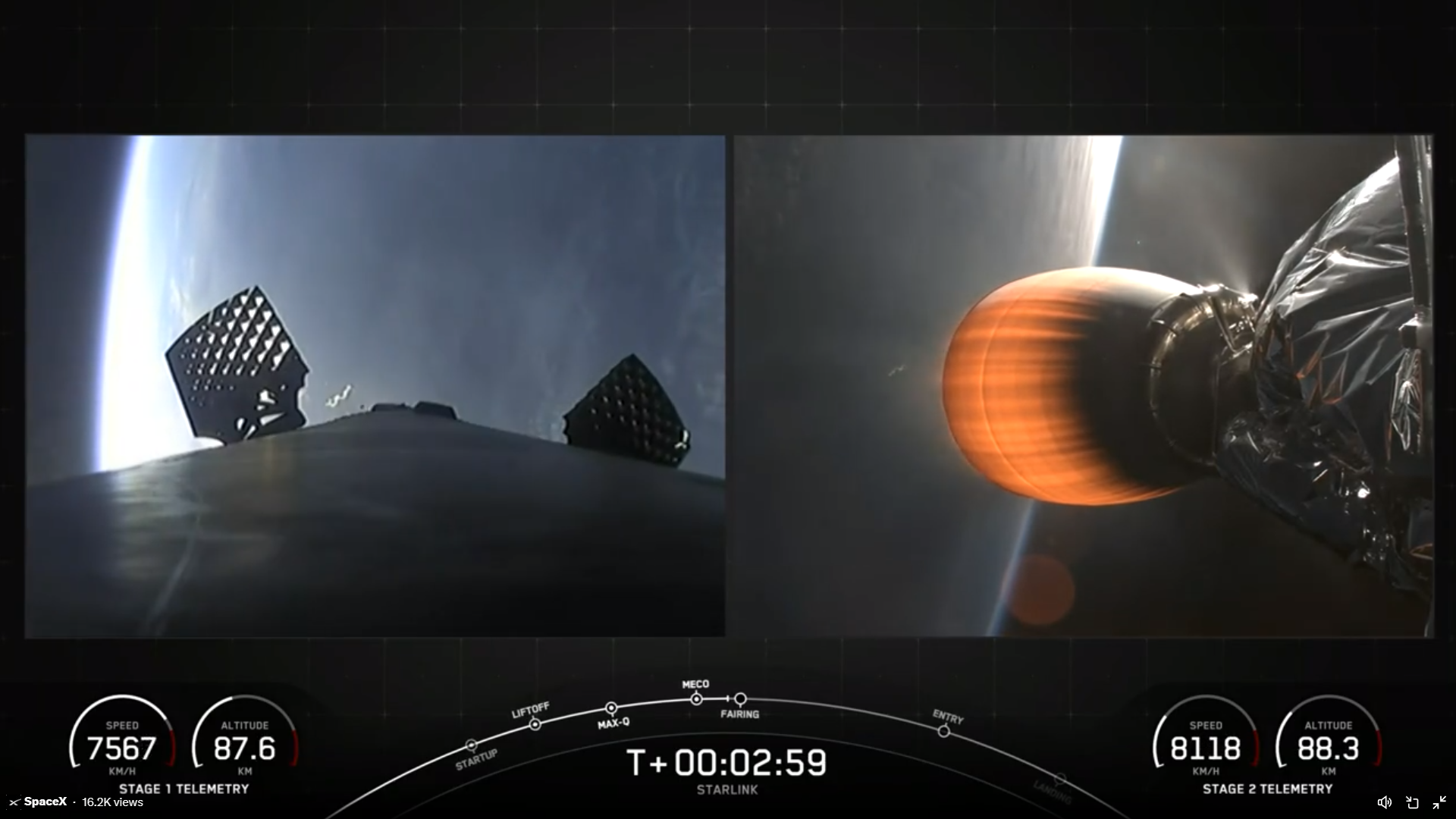
Aboard tonight’s mission were a further 23 of these small, flat-packed internet communications satellites, bringing to eight the total number of dedicated Starlink stacks B1067 has lofted since September 2022. All told, this particular booster has lofted 312 Starlinks to orbit, about 5.5 percent of the total launched by the entire Falcon 9 fleet since May 2019.
Weather for tonight’s launch proved generally favorable, with an 80-percent probability of acceptable conditions during a suite of T-0 points from 4 p.m. through 7:59 p.m. EST. A group of backup opportunities were also available on Monday afternoon, set against the backdrop of a murkier weather picture of only 40-percent favorability.
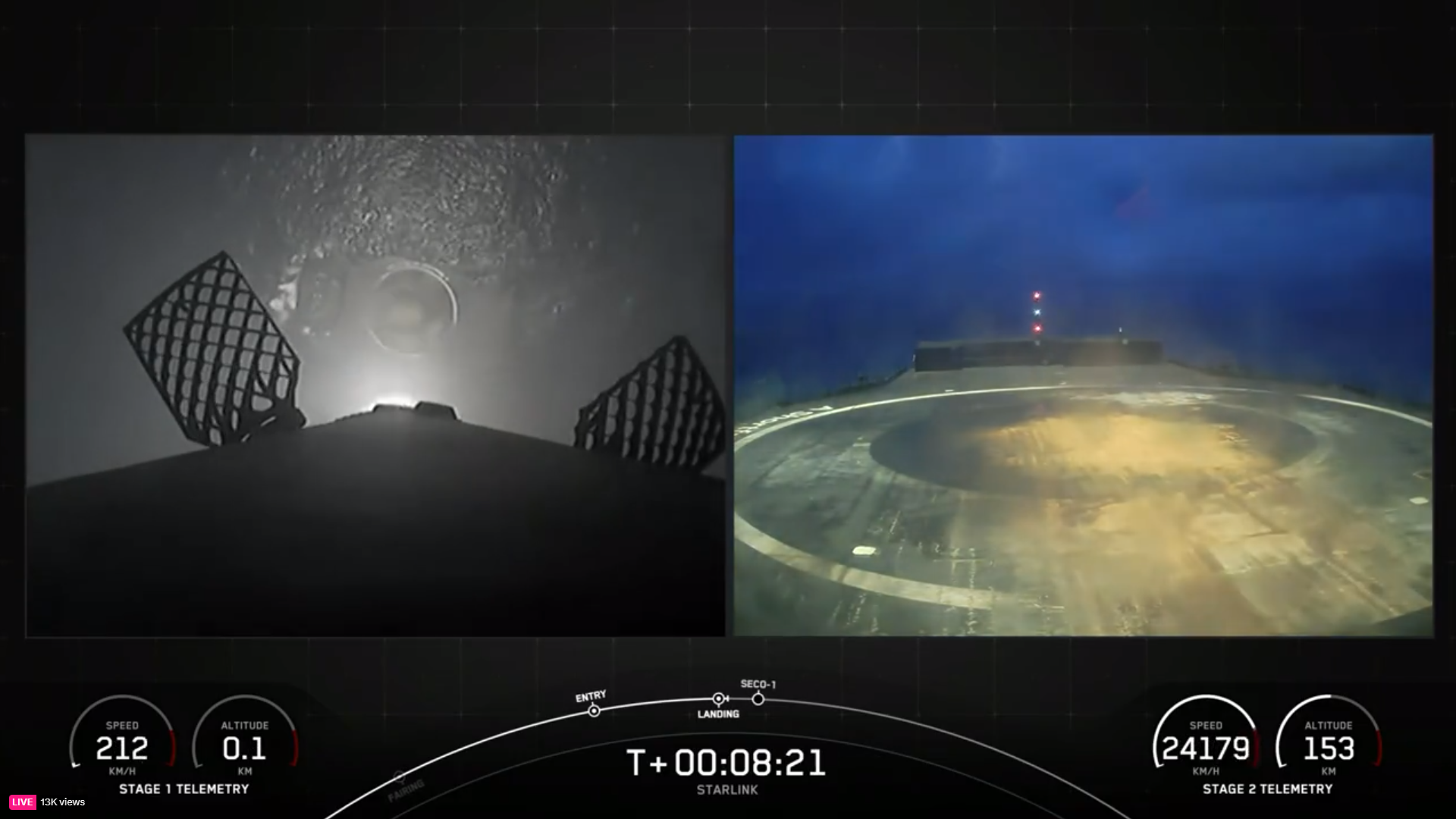
Key to the current Florida weather situation is a slow-moving cold front, although this was expected “to finally get nudged south of the area late Sunday as surface high pressure builds across the Southeast U.S.,” according to the 45th Weather Squadron at Patrick Space Force Base. “The reprieve from the active weather pattern will be short-lived, however, as a powerful storm system develops across the southern Plains and western Gulf of Mexico on Monday, with its impacts expanding towards Florida late in the day.”
All told, this threatened Sunday afternoon’s opening launch attempt with violating the Thick Cloud Layers Rule, with an added risk of breaking the Cumulus Cloud Rule also factoring into Monday’s dreary weather picture. In readiness for launch, the Autonomous Spaceport Drone Ship (ASDS), “A Shortfall of Gravitas”, put to sea out of Port Canaveral on the morning of 3 January, bound for a recovery position some 390 miles (630 kilometers) offshore in the Atlantic Ocean.
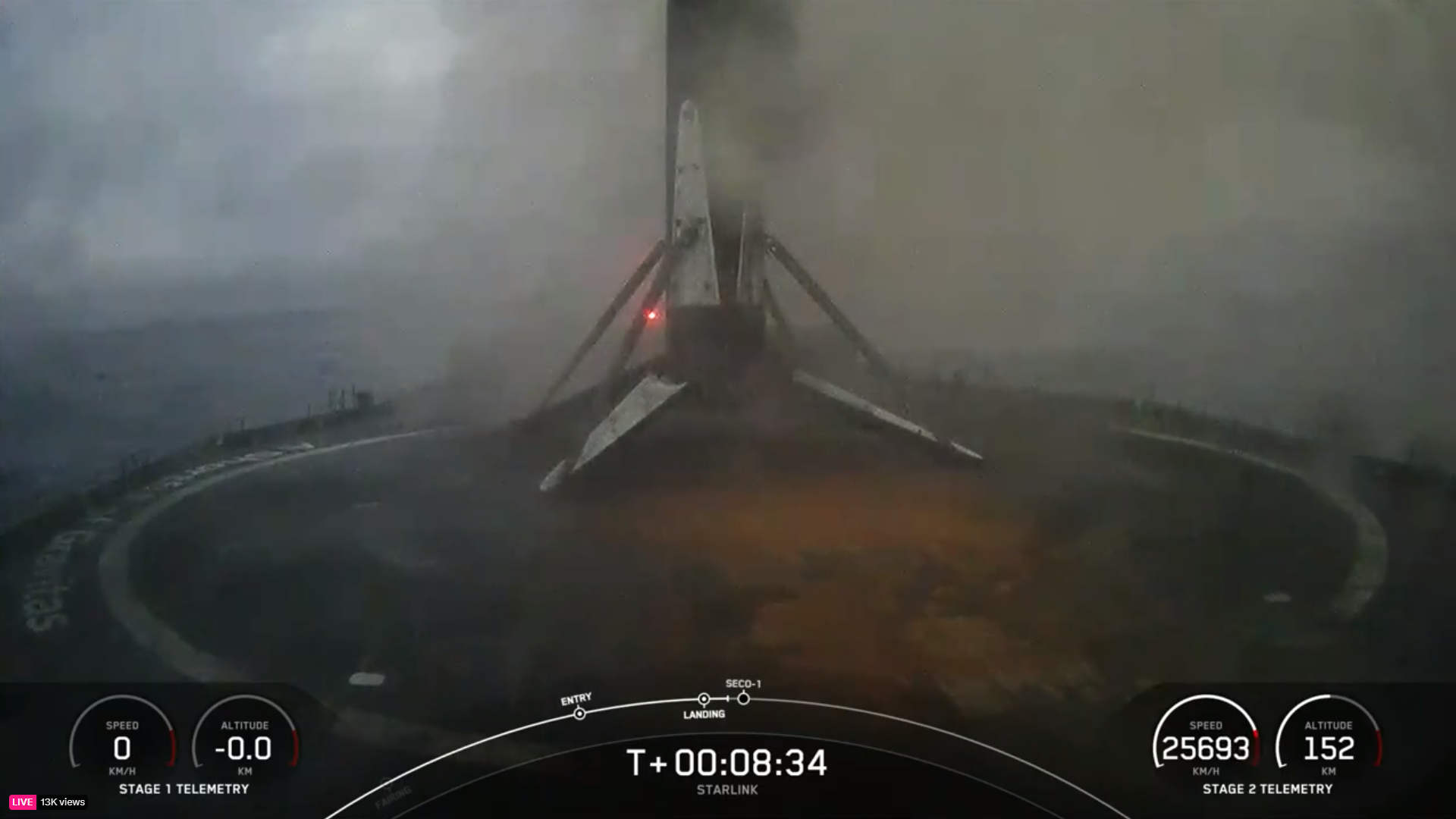
Liftoff occurred from storied Space Launch Complex (SLC)-40 at the Cape at 5:35 p.m. EST and B1067 roared smoothly into the steadily darkening Florida sky, the flare of her nine Merlin 1D+ engines clearly visible throughout first-stage ascent. At 2.5 minutes into flight, the core stage separated from the stack and completed a picture-perfect descent to alight on ASOG’s deck. Meanwhile, the single Merlin 1D+ Vacuum engine of the second stage burned for six minutes, with a targeted deployment of the 23 Starlinks about 65 minutes into tonight’s flight.
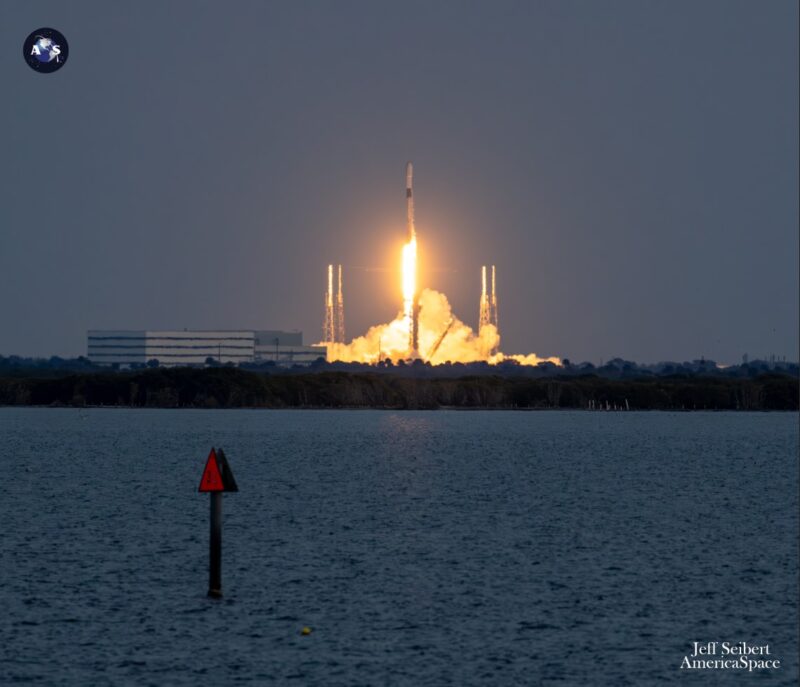
As a network, Starlink enables high-speed and low-latency internet provision to 70 sovereign nations and international markets in North and South America, Europe, Asia, Oceania and Africa. Landlocked Eswatini—formerly Swaziland in southern Africa—and Paraguay joined Starlink as recently as December.

The downsized Starlink “V2 Mini” satellites, first flown last February, boast three to four times greater “usable” bandwidth than earlier Starlink iterations. “V2 Minis include key technologies—such as more powerful phased-array antennas and the use of E-Band for backhaul—which will allow Starlink to provide 4x more capacity per satellite than earlier iterations,” SpaceX explained. “Among other enhancements, V2 Minis are equipped with new argon Hall thrusters for on-orbit maneuvering.”
Florida-based intercity operator Brightline adopted Starlink on its trains earlier in 2023, the first passenger rail service in the world to do so. Additionally, El Salvador’s Ministry of Education has begun integrating Starlink capability into its schools to help close the digital divide between urban and remote rural communities and 50 Rwandan schools are now connected via Starlink’s high-speed internet service.




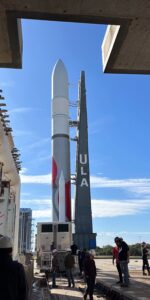
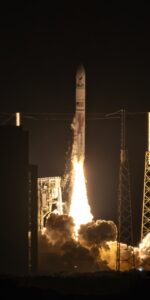
7 Comments
Leave a Reply7 Pings & Trackbacks
Pingback:SpaceX Launches Third Mission in 2024s First Week, ULA Vulcan-Centaur to Fly Tonight – AmericaSpace | Prometheism Transhumanism Post Humanism
Pingback:After Weather Delays, Life-Leading Falcon 9 Continues Rapid Vandenberg Launch Cadence - AmericaSpace
Pingback:After Weather Delays, Life-Leading Falcon 9 Continues Rapid Vandenberg Launch Cadence - SPACERFIT
Pingback:SpaceX Flies 300th Falcon Mission, Looks Ahead to Ax-3 Space Station Launch - AmericaSpace
Pingback:SpaceX Flies 300th Falcon Mission, Looks Ahead to Ax-3 Space Station Launch - SPACERFIT
Pingback:SpaceX Launches Sixth Falcon 9 of February, Delivers Indonesian Satellite to Orbit - AmericaSpace
Pingback:SpaceX Launches Sixth Falcon 9 of February, Delivers Indonesian Satellite to Orbit - SPACERFIT